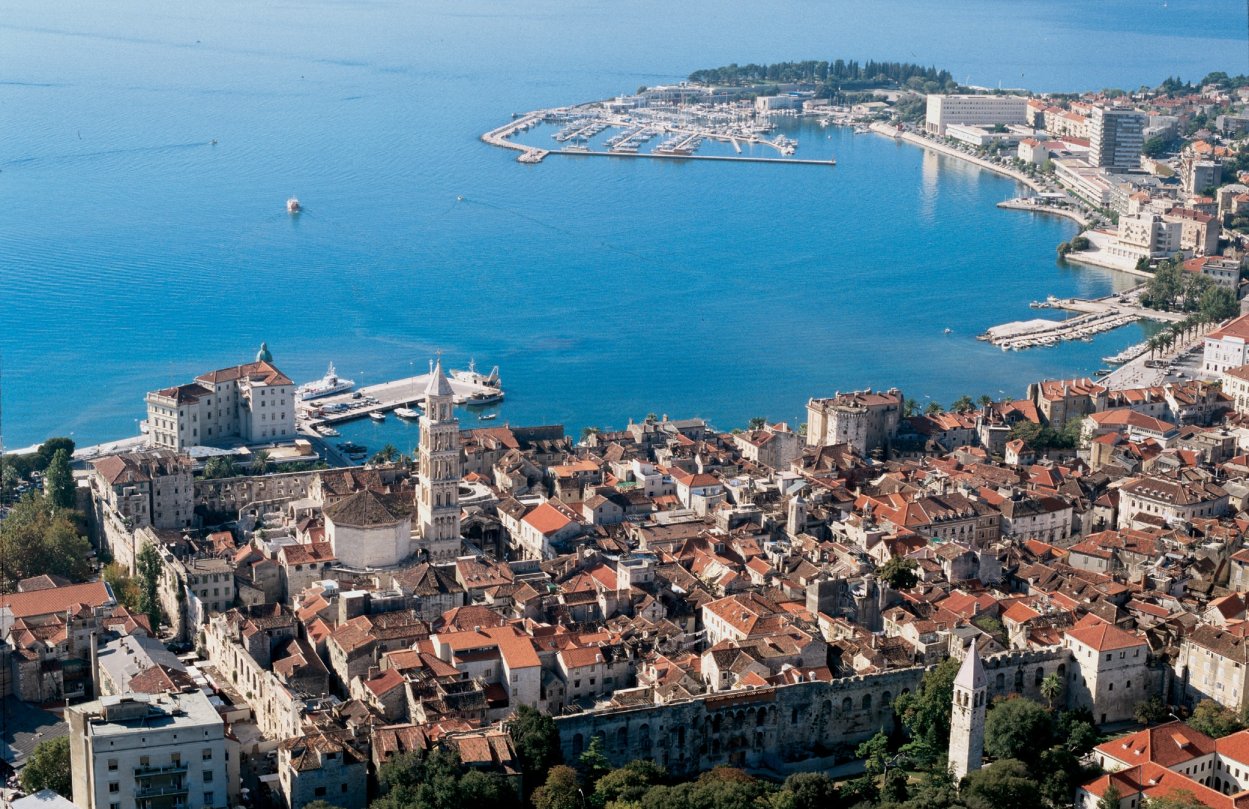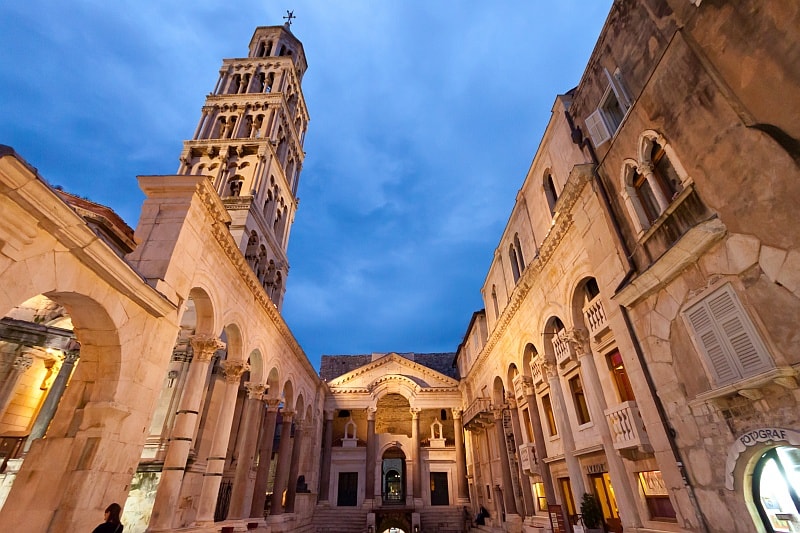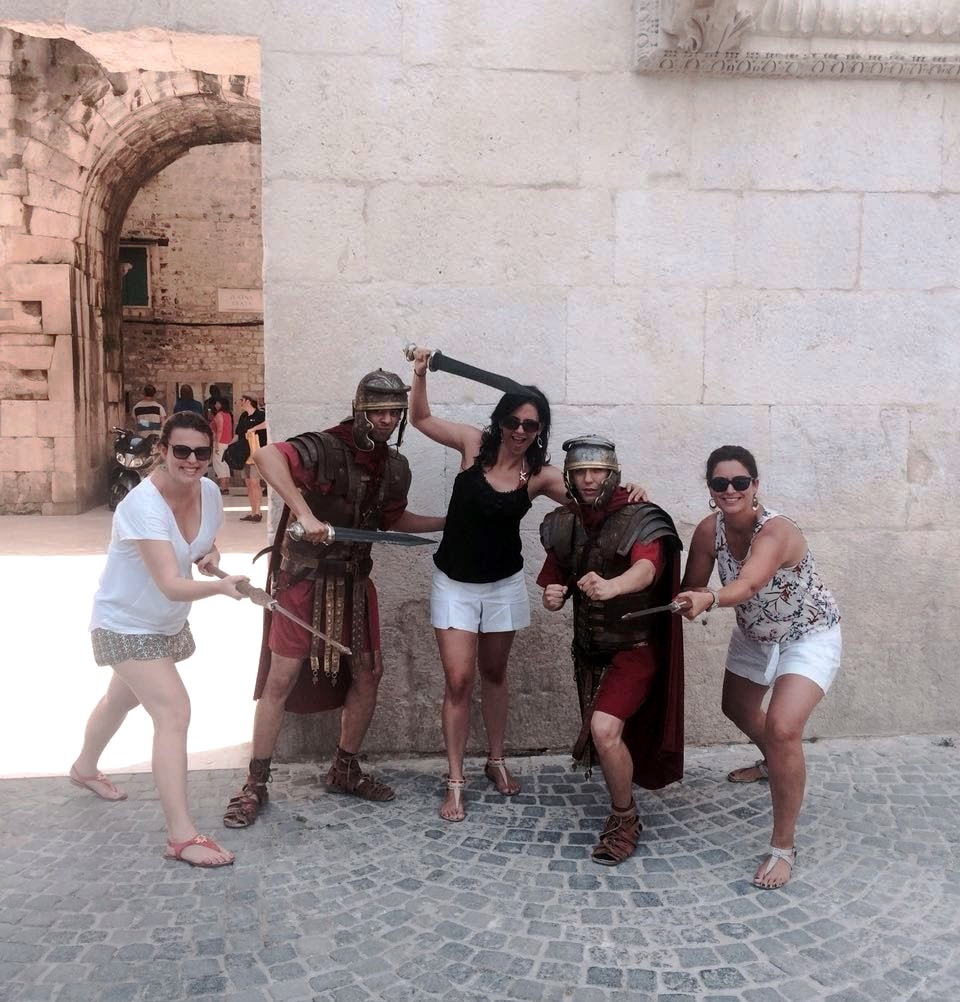SPLIT TRAVEL GUIDE
Split City Tour
Dubrovnik, historically called Ragusa, is a stunning walled city located in the South of Croatia, at the Adriatic sea, and is listed as a UNESCO Heritage Site since 1979. Historically famous for its maritime trades and wealth, the city is today one of Croatia’s most important tourist destinations, attracting tourists from all over, interested in its Gothic, Renaissance and Baroque churches, palaces, fountains, monasteries and beaches.
Dubrovnik, or Ragusa, was founded in the 7th century, by the Greeks. One century later, it was a part of the Byzantine Empire. After the crusades, it was ruled by the Venetians from 1205 to 1358, when it achieved relative independence initially as part of the Kingdom of Hungary and then of the Ottoman Empire.
During the 15th and 16th centuries, the city became wealthy and developed, as it provided alternative trading routes to the Venetians. Roman customs were introduced, such as town planning, quarantine regulations, and the construction of the aqueduct. Its people were famous for their diplomacy skills, as they managed to move their fleets freely from India to America, not conquering, but trading and sailing under a white flag: Libertas (meaning freedom).
Dubrovnik’s power decreased due to a Mediterranean shipping crises and the earthquake of 1667 that killed a large share of its population. At that time, the republic was forced to sell a mainland area to the Ottomans, in a region that is today Neum (Bosnia and Herzegovina). The city remained a free state until 1806 when it surrendered to the Napoleonic army, annexing the city to the Napoleon’s Kingdom of Italy.
In 1815 Dubrovnik became part of the Habsburg Empire, and was declared the Kingdom of Dalmatia, with its political center in today’s Zadar. The Austrians ruled the region until their fall in 1918, after the I World War.
Dubrovnik was then declared part of the Kingdom of Serbs, Croats, and Slovenes, later known as Kingdom of Yugoslavia, a communist regime that lasted until the Croatian War of Independence in 1991.
Your Content Goes Here
Air: The international airport is located in Čilipi, around 20kms from Dubrovnik, has been recently renovated and sees every year an increase in the number of connecting flights and destinations.
Road: Dubrovnik is well connected by roads within Croatia, with 2 routes available for drivers, the Jadranska magistrala or D8, that follows the seashore, or the Highway A1, connecting Zagreb in the north with Ploče, about 100kms from Dubrovnik.
Train: no train connection to Dubrovnik. The furthest one can go in Southern Croatia by train is to Split
Cruise: the port of Dubrovnik is located in Gruž, Northwest of the old city and has increased in popularity in the last 5 years.
Ferry: there are several lines between the North of Croatia and Dubrovnik. There is also a line connecting the city with Bari, in the south of Italy
Dubrovnik has a Mediterranean climate, with hot and moderately dry summers, with temperate around 28°C during day time, and mild to cool, wet winters, with average temperature of 13°C.
The region is also famous for the Bora wind, or Bura for Croatians. It is an extremely strong and cold wind that blows from the mountains towards the sea.
Diocletian’s Palace: UNESCO Heritage Site since 1979, Split’s old town is built around the remains of this Roman palace with well preserved main streets cardo and decumanus, basement level of the palace, as well as 4 entry gates Porta Aurea (Zlatna vrata, Golden gate), Porta Argenta (Srebrna vrata, Silver gate), Porta Ferrea (Željezna vrata, Iron gate) and Porta Aenea (Mjedena vrata. Bronze gate).
Sveti Duje cathedral: originally built to be the mausoleum for the Roman emperor Diocletian, it has a belltower which provides amazing panoramic views of Split, nearby islands and the Marjan hill.
Peristyle square: main square of Diocletian’s palace with well preserved Roman and later architecture.
Jupiter’s temple: ancient Roman temple which later became St. John’s baptistery.
Riva: main city promenade, facing the Adriatic Sea.
Pjaca or People’s Square: main city’s square, located just outside the Iron Gate of the Palace. The square holds many prominent buildings to explore: several palaces, the Loggia, Clock Tower, and more.
Marjan hill: popular recreational area near the old town, Marjan’s peak is 174 m high and offers a great panoramic view of Split. There are a couple of churches in the hill area, as well as Split’s Zoo and the Science Museum.
Varoš: fisherman neighborhood close to the old town, filled with charming narrow streets and local restaurants.
Statue of Gregory of Nin (Grgur Ninski): this statue by the great Meštorvić represents Croatia’s struggle for own language and identity. Also, the legend says that if you rub the big toe of the statue and make a wish, it comes true.
Meštrović Gallery: contains a collection of sculptures, drawings, designs and furniture of Ivan Meštrović, the most famous Croatian sculptor. The building itself was designed by him, it faces the Adriatic Sea and is an art monument in itself. Nearby, there is a restored chapel that displays a set of wooden panels carved by Meštrović.
Archaeological Museum: contains artifacts and monuments from nearby Salona and Narona, ancient Roman colonies. It is the oldest museum in Croatia (1820).
Getski Garden: the smallest park in Split, located inside Diocletian’s Palace
The Split City Museum: located in the former Papalić Palace, its collection presents the heritage of the city.
The Ethnographic Museum: displays a wide range of ethnographic content from Dalmatia.
Bačvice beach: most popular with the locals, on any sunny day you might catch a game of Picigin – traditional beach game played by local men.
Beaches around Marjan Hill: Kaštelet, Kašjuni and Bene are the most popular.
If you are interested in traditional souvenirs, other than the usual magnet or such, you should look into objects made of pure white stone from the island of Brač, but also lavender from the island of Hvar, as well as handmade tablecloths and linens.
Authentic Split jewelry is fine filigree gold, sometimes decorated with red coral or perls. Look for earrings in the shape of baskets, worn by Split women throughout history.
Mostly Mediterranean cuisine, with lots of seafood dishes, like the traditional Squid black risotto, and some meat dishes, like the popular and traditional Pašticada.
The traditional chocolate brand Kraš can be found in several stores and is extremely tasty.
If you appreciate alcohol, you need to try Croatia’s Rakija, a strong distilled drink. It has several variations, like the Loza or Lozovača (made from grapes), Travarica (made with herbs) or Orahovica (made with walnuts).
Croatian wines are excellent and several bars offer tastings in the old city. Try the ones from the Dubrovnik region, either from the Pelješac Peninsula or Konavle.
Your Content Goes Here
Split City Tours

What to do in Split?
Split Private Walking Tour
Price: from 120 €
Duration: 2 hours
Languages: English, Portuguese, or language of your choice
Departure from: Pile or Ploče city entrance

What to see in Split?
Split Panoramic Private City Tour
Price: from 120 €
Duration: 3,5 hours
Languages: English, Portuguese, or language of your choice
Departure from: Your accommodation



Best of Adriatic Recommends
“Make sure you stop by the Grgur Ninski statue, just outside the Golden Gate of the Diocletian Palace and rub his big toe to make a wish come true!”
AMANDA
“Ask your guide to include a visit to the green market and fish market with a tapas-style tasting in your tour. It’ll show you how locals live.”
NATAŠA
Popular Private Day Trips from Split
Mostar & Blagaj Day Trip
Departures…
Brač Island Day Trip
Highlights: Vidova Gora mountain peak, Bol beach, Škrip Olive Oil Museum…
CONTACT US TODAY


